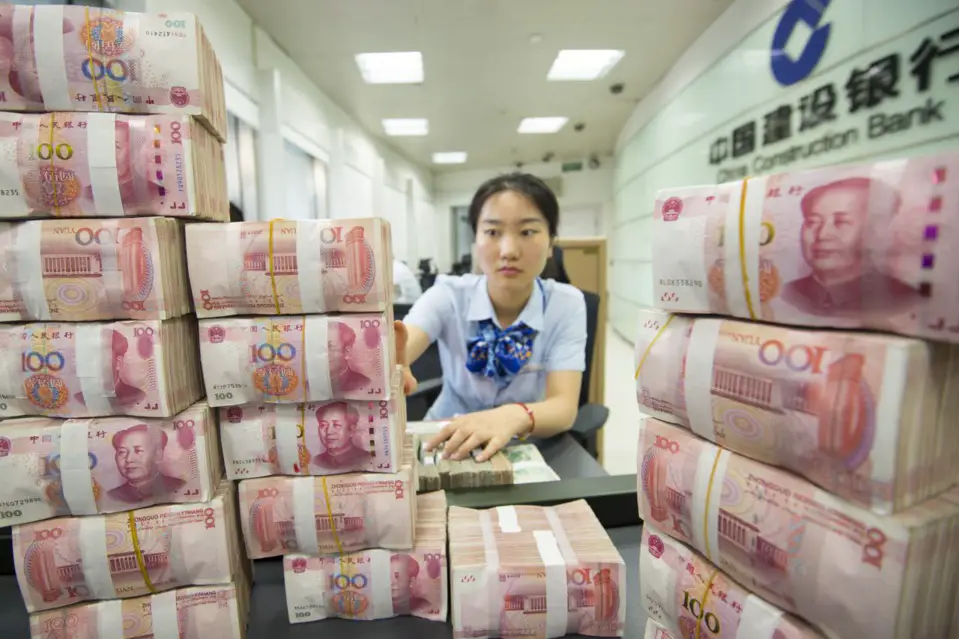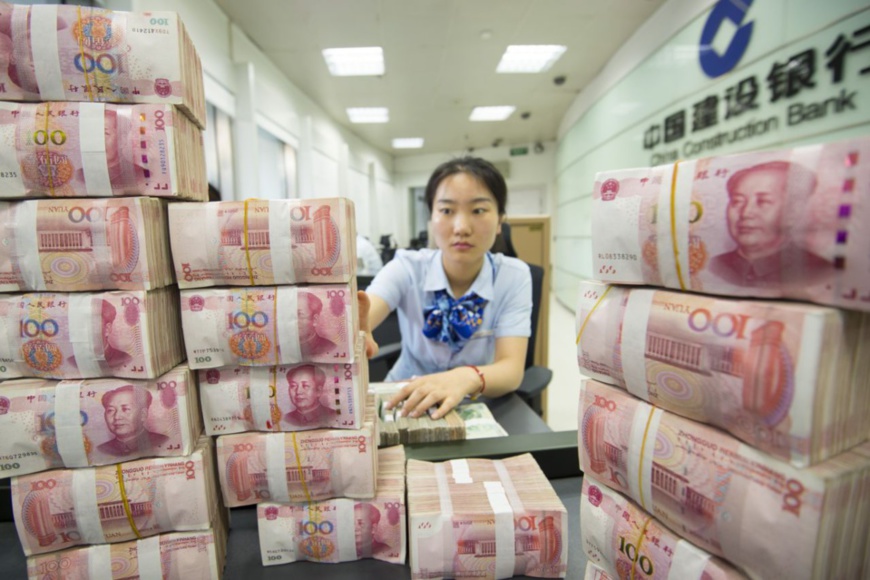By Wang Guan from People’s Daily
Both appreciation of the Chinese currency renminbi, or the yuan from 2017 to the first quarter of 2018, as well as its devaluation since the second quarter of this year were driven by market supply and demand, China’s central bank clarified in its second-quarter report on monetary policies issued on August 10.
The People’s Bank of China (PBOC) has almost withdrawn its “regular” intervention in the foreign exchange market, which can be evidenced by the changes in the official foreign exchange reserve and the central bank’s yuan funds outstanding for foreign exchange, the report added.
China has been making its exchange rate reform market-oriented, giving more play to the decisive role of market in exchange rate formation, and staying away from competitive currency devaluation.
The central bank highlighted that as the exchange rate is mainly determined by market supply and demand, the central bank will not take the exchange rate of Chinese currency as a tool to cope with external disturbances such as trade disputes.
Instead, China maintains a managed floating foreign exchange mechanism that is market-based and adjusted in reference with a basket of currencies, said the report, adding that as the market-oriented exchange rate reform proceeds, the rate will be more flexible.
Currently, China’s economic fundamentals are able to basically stabilize the yuan’s exchange rate at a reasonable and balanced level, the PBOC wrote in the report, explaining that China has reaped positive results in economic restructuring in recent years, thanks to its supply-side structural reform, as well as efforts to streamline administration and delegate power to lower levels, and give play to market mechanisms.
In addition, the emergence of new growth drivers, strong economic resilience and a balance in international payments have also strongly supported the stabilization of the exchange rate of the yuan, it pointed out.
In the next phase, the central bank will continue to deepen the market-oriented exchange rate reform to maintain flexibility of the yuan exchange rate, give play to the role of price in market supply and demand, and promote self-balance of the foreign exchange market.
In addition, in view of pro-cyclical fluctuations that may occur in the foreign exchange market, the central bank will continue to use existing experience and sufficient policy tools to take further effective measures to make counter-cyclical adjustments when necessary, noted the report.
It will also give full play to the regulating effect of the macro-prudential policies so as to keep the yuan’s exchange rate basically stable at a reasonable and balanced level, the central bank added.
The People’s Bank of China (PBOC) has almost withdrawn its “regular” intervention in the foreign exchange market, which can be evidenced by the changes in the official foreign exchange reserve and the central bank’s yuan funds outstanding for foreign exchange, the report added.
China has been making its exchange rate reform market-oriented, giving more play to the decisive role of market in exchange rate formation, and staying away from competitive currency devaluation.
The central bank highlighted that as the exchange rate is mainly determined by market supply and demand, the central bank will not take the exchange rate of Chinese currency as a tool to cope with external disturbances such as trade disputes.
Instead, China maintains a managed floating foreign exchange mechanism that is market-based and adjusted in reference with a basket of currencies, said the report, adding that as the market-oriented exchange rate reform proceeds, the rate will be more flexible.
Currently, China’s economic fundamentals are able to basically stabilize the yuan’s exchange rate at a reasonable and balanced level, the PBOC wrote in the report, explaining that China has reaped positive results in economic restructuring in recent years, thanks to its supply-side structural reform, as well as efforts to streamline administration and delegate power to lower levels, and give play to market mechanisms.
In addition, the emergence of new growth drivers, strong economic resilience and a balance in international payments have also strongly supported the stabilization of the exchange rate of the yuan, it pointed out.
In the next phase, the central bank will continue to deepen the market-oriented exchange rate reform to maintain flexibility of the yuan exchange rate, give play to the role of price in market supply and demand, and promote self-balance of the foreign exchange market.
In addition, in view of pro-cyclical fluctuations that may occur in the foreign exchange market, the central bank will continue to use existing experience and sufficient policy tools to take further effective measures to make counter-cyclical adjustments when necessary, noted the report.
It will also give full play to the regulating effect of the macro-prudential policies so as to keep the yuan’s exchange rate basically stable at a reasonable and balanced level, the central bank added.
 Menu
Menu
 Renminbi exchange rate mainly determined by market: central bank
Renminbi exchange rate mainly determined by market: central bank

















